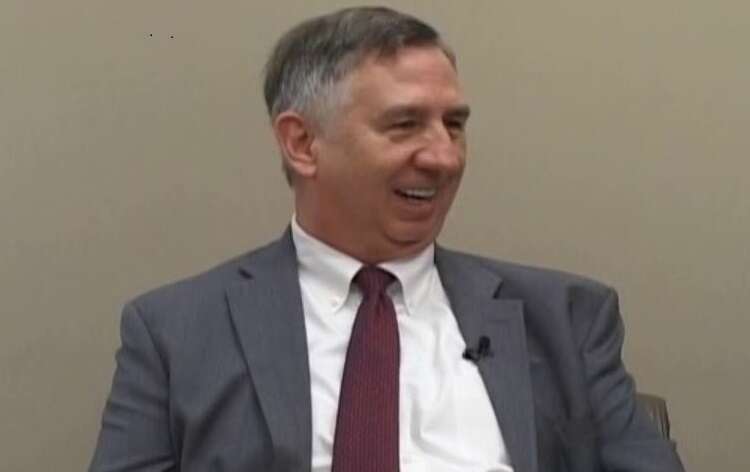OPM testing new platform for online retirement applications
Guy Cavallo, OPM’s chief information officer, said the goal of this initial project is to reduce paper and the time to process retirement applications.
The Office of Personnel Management is starting to see the light at the end of the tunnel on its never-ending journey to modernize its retirement systems.
A pilot to test out a new online retirement application platform is showing promise with several federal payroll providers.
Guy Cavallo, OPM’s chief information officer, said the pilot includes the Agriculture Department’s National Finance Center and several others to reduce both the amount of paper needed and the error rate in processing retirement applications.

“We believe doing the online checking will help really reduce that back and forth that often is needed. We’re also rebuilding the way calculations are done, and we’re implementing a digital file system so that we can stop dealing with millions and millions of pages of paper to be part of retirement,” Cavallo said in an interview with Federal News Network. “It’s going to take many years for us to do this, but by taking the heart of that, we’re improving the way somebody starts to retirement. We’re making sure the calculation service is correct, and then we’re working to get rid of paper versions and move to digital. Those are our first three building blocks.”
Cavallo said the goal of the test is to test out the technology and the process changes and continually improve them. He said there is no specific time frame for how long the pilot will last.
“Part of this is we also have to train and educate all the human resource officials at the agencies on what’s different. We’re taking a slow approach here, but being agile. We’re getting feedback from the initial users now that we will build into the into the updated version,” he said. “Right now, it’s all going to the backlog. We got it launched earlier this year and are having run it through the summer. We want to make sure we get an adequate number of users to get decent feedback, and then we’ll evaluate how it worked.”
A long-time retirement systems challenge
OPM said for July its current retirement claims backlog is 15,797, the highest in three months, but down by almost 5,000 claims since January.
Cavallo said OPM is testing out the new online retirement application platform with several hundred users to ensure they receive a wide range of feedback.
OPM has struggled to move the retirement process away from paper and modernize the systems it uses for much of the past three-plus decades. Over the late two years, lawmakers and auditors highlighted the challenges and need to modernize these processes.
In April 2023, lawmakers wrote to OPM seeking answers when the backlog reached almost 23,000 claims and the average time to process a retiree was 81 days.
Last November, OPM’s inspector general also found ongoing shortcomings in OPM’s planning and execution.
But since the middle of 2023, Cavallo has applied the “small bite” approach to retirement systems modernization. He said in May 2023 that the goal is not to try to fix all the problems at once. He said OPM is starting to move toward a centralized common case management solution so that everyone has a case that can be looked up by the agent.
The retirement systems modernization effort is part of a broader IT strategy.
OPM upgrades USAJobs.gov
Cavallo said OPM’s two-year sprint to the cloud is paying off.
“We moved our largest legacy application to the cloud so anybody who’s applying for a federal job at USAJobs.gov today is in the cloud versus on premise,” he said. “We have quite a few things lined up to move this summer, and again, we think it’s going to take us another year until we have all of our major applications that that we’re ready to move to the cloud.”
One of the big focuses for OPM is not just to “lift and shift” applications to the cloud, but focus on moving to software-as-a-service (SaaS) or other cloud native applications.
“My goal, and I think this is every CIO’s goal, is to get out of patching and version upgrades and let the cloud vendors provide that in real time, just like we got rid of email,” Cavallo said. “It’s the next thing that the government does not do well. We took our on-premise databases, and instead of just moving them, we moved them to native cloud databases. So now I know I never have to patch them again.”
Cavallo said the improvements to USAJobs.gov are both on the front end and the back end.
He said users will find it faster to search and find jobs.
On the back end, Cavallo said OPM will see increased reliability and the ability to increase compute during the busiest hiring times.
“One of our biggest hits on USAJobs every year is when NASA advertises for astronauts. So just like any cloud service, if we need to surge our compute to deal with a lot of people thinking they can be astronauts, we can do that,” he said. “When we’re on-premise, in the old model, we had to have enough hardware to deal with that peak, even if it only happens once a year.”
Copyright © 2024 Federal News Network. All rights reserved. This website is not intended for users located within the European Economic Area.
Jason Miller is executive editor of Federal News Network and directs news coverage on the people, policy and programs of the federal government.
Follow @jmillerWFED






